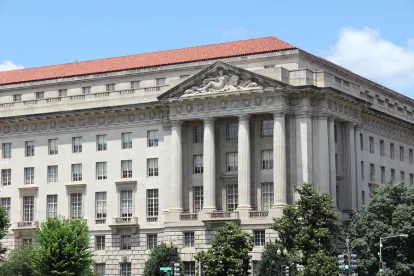A federal court has ordered EPA to make extensive changes to its Chemical Data Reporting rule (CDR) with respect to asbestos reporting. While the ruling in ADAO v. Wheeler is limited to CDR reporting of asbestos, it sets the stage for targeted reporting requirements by manufacturers and possibly processors for other substances being considered for prioritization or that are the subjects of risk evaluations. Such requirements might include elimination of the exemptions for substances in articles or present only as impurities and reporting by processors. It will be up to the incoming Biden Administration to decide whether to appeal the decision to the Ninth Circuit or to conduct rulemaking, at least for asbestos.
The Court Decision
The December 22, 2020 court ruling is by a federal district court in the Northern District of California in two cases. One, Asbestos Disease Awareness Organization v. Wheeler, was brought by several NGOs. The other case, California v. USEPA, was brought by several state attorneys general. Each suit appealed EPA’s denial of that group’s citizens’ petitions under TSCA section 21 asking EPA to amend the CDR or to adopt a new rule supplementing the CDR so as to collect additional information on asbestos assertedly needed for the still-ongoing risk evaluation for asbestos under TSCA section 6(b).
After finding that both sets of plaintiffs had informational standing, the court held that EPA’s denials of the two citizens’ petitions violated the Administrative Procedure Act, in that the reasons offered for the denials were arbitrary and capricious. As a remedy, the court said:
The EPA is directed to amend its CDR reporting rule pursuant to its authority under 15 U.S.C. § 2607(a)(1)(A) (i.e., under Section 8(a) of TSCA), to address the information-gathering deficiencies identified herein.
Those deficiencies, which the court characterized as “loopholes,” included:
-
The exemption for chemicals in articles, 40 C.F.R. § 711.10(b). The decision noted that EPA’s scope document for the asbestos risk evaluation omitted a number of articles known to contain asbestos, These included cement products; clothing; compressed asbestos fiber jointing paper; millboard; felt; yarn and thread; cords and string; woven or knitted fabric; asbestos articles for use in civil aircraft; crocidolite footwear; accessories and headgear; asbestos paper; compressed asbestos fiber jointing in sheets or rolls; asbestos woven or knitted fabric; wallboard and floor tiles; window caulking; recycled asphalt shingle scrap; adhesive mastic; gaskets for motorcycles; and pads for ATVs and scooters.
-
The exemption for impurities (or other circumstances of manufacture described in 40 C.F.R. § 720.30(g) or (h)), 40 C.F.R. § 711.10(c). The citizens’ petitions had cited “several studies demonstrating the presence of asbestos contamination in makeup, crayons and other children’s toys made from talc (a mineral often found in deposits also containing asbestos) raising the possibility that thousands of asbestos-contaminated talc-based consumer products may be entering the US.”
-
The exclusion for processors. The CDR requires reporting only by manufacturers. 40 C.F.R. § 711.8. The court declared that, “TSCA unambiguously requires processors to report their data to EPA.” Section 8(a)(1) begins, “The Administrator shall promulgate rules under which – (A) each person … who manufactures or processes … shall submit to the Administrator such reports, as the Administrator may reasonably require ….” (Emphasis in the court decision.) The court found that EPA’s argument that it already captures all reasonably available information on processing from reporting by manufacturers (through the process and use section of the Form U and voluntary information submissions) “is not reasonable.” The decision did not quote or address the section 8(a)(1) limitation, “as the Administrator shall reasonably require.”
-
The exclusion for naturally occurring substances. The section 21 petitions had asked EPA to waive the exclusion for naturally occurring substances (NOCS) in 40 C.F.R. § 711.6(a)(3), since, as the court observed, “raw asbestos is a NOCS.” (Emphasis in the court decision.) The court observed that, unlike for the other “loopholes,” “Plaintiffs do not give specific examples of asbestos imports of NOCS which EPA misses.” Accordingly, it said, “the Court need not rest its decision on the NOCS loophole in light of its ruling on the other loopholes discussed supra.” Thus, it is unclear whether the court’s order for EPA to address “the information-gathering deficiencies identified herein” includes the NOCS exemption.
-
The threshold quantity for reporting. The decision noted that the section 21 petitions had asked EPA to reduce the reporting threshold for asbestos from 2,500 lbs. to 10 lbs., but it did not characterize this as a loophole or otherwise address this request. Presumably, EPA is not required to change the reporting threshold for asbestos.
Implications for Asbestos
EPA has 60 days after entry of the order in these cases to appeal the order to the Ninth Circuit. Fed. R. App. Proc. 4(a)(1)(B). This means that the Biden Administration will have to decide whether to appeal.
If it does not appeal, EPA will extend the CDR reporting deadline for asbestos, or provide another mechanism for reporting (see below), while it complies with the order. The decision noted:
Should the Court issue an order expanding the scope of the CDR rule, companies will have until January 29 to report that additional information; however, the EPA could extend the CDR reporting period to allow for adequate time to collect new information. In fact, EPA has already extended the CDR reporting deadline twice this year.
If EPA requires expanded reporting, that would mean further delays in the issuance of its final risk evaluation for asbestos. The court decision recognized that “EPA has not yet completed its final risk evaluation.” It did not mention that the statutory deadline for issuance of the final risk evaluation passed in June 2020.
Implications for Other Substances
The court decision is expressly limited to reporting of information on asbestos. Nevertheless, it could lead the Biden Administration’s EPA to adopt supplemental reporting requirements for other substances where information beyond that provided by the CDR is needed for prioritization or risk evaluation.
The court found that EPA’s justifications for the exemptions for articles and for impurities, and the exclusion of reporting requirements for processors, to be arbitrary and capricious in the context of asbestos. Those justifications are similar to the explanations EPA used in adopting those exemptions and that exclusion. For example, in these cases EPA had argued that it did not need information on asbestos present in articles or as impurities. In proposing the original Inventory Update Rule (IUR), the predecessor of the CDR, EPA similarly explained:
EPA has exempted such types of “manufacture” from the original Inventory reporting and from PMN requirements. Accordingly, EPA is proposing to exempt these types of “manufacture” from this rule as well, because EPA believes that it does not need information on such coincidental manufacture to update the Inventory Data Base.
50 Fed. Reg. 9944, 9948 (Mar. 12, 1985). Here, however, the court found that EPA does need that information for the purpose of mandated risk evaluations, a purpose that did not exist until 2016.
EPA has already identified a way to collect information on substances it is considering for prioritization or risk evaluations without amending the CDR for all substances. An entry in the Fall 2020 Regulatory Agenda (RIN 2070-AK62) reports that EPA is planning to require supplemental reporting for actual and potential risk evaluation chemicals:
EPA is developing a rulemaking under section 8(a) of the Toxic Substances Control Act (TSCA) to add certain chemicals that are on the TSCA Work Plan to the Chemical-Specific Reporting and Recordkeeping rules in 40 CFR part 704, subpart B …. EPA is developing this TSCA section 8(a) rule to obtain information about potential hazards and exposure pathways related to certain chemicals on the TSCA Work Plan, particularly occupational, environmental, and consumer exposure information. This information is needed to inform prioritization and risk evaluation of the chemical substances, as mandated under TSCA section 6. TSCA section 6 requires EPA to draw chemicals from the 2014 update of the TSCA Work Plan for Chemical Assessments to prioritize and/or evaluate those particular chemicals or chemical groups listed on the Work Plan for potential risks.
The TSCA Work Plan mentioned above refers to the TSCA Work Plan for Chemical Assessments: 2014 Update. Under TSCA section 6(b)(2)(B), at least 50 percent of all chemical substances on which risk evaluations are being conducted by EPA must be drawn from the 2014 update.
The Regulatory Agenda predicts a proposed Part 704 rule by November 2021 and a final rule by July 2022. EPA might take a similar one-off approach for the asbestos reporting required by the ADAO decision, notwithstanding its order that EPA “amend its CDR reporting rule.”
It may be noteworthy that some chemical-specific rules in Part 704 require reporting by processors as well as by manufacturers. Also, Part 704 has exemptions for chemicals in articles or present as impurities, but chemical-specific rules can waive those exemptions. 40 C.F.R. § 704.5.
It is not likely that EPA will amend the CDR itself to eliminate reporting exemptions or the processor exclusion for all reportable substances. For example, EPA has previously reaffirmed its original decision not to require CDR reporting by processors. The preamble to the 2010 IUR proposed rule that led to the 2011 CDR final rule said:
EPA seeks comment on also requiring processors to report processing and use data …. The Agency believes that processors may be more familiar with the processing and use of the chemical substances than manufacturers (including importers), and therefore may be able to provide more complete and accurate exposure-related data.
75 Fed. Reg. 49656, 49682 (Aug. 13, 2010). Ultimately, EPA did not adopt a processor reporting requirement, without much explanation. The final economic analysis for that 2011 rule estimated that processors would submit 92,100 reports if they were required to provide processing and use information, based on an assumption of 15 processors for each of 6,140 substances. In contrast, it estimated that 4,085 manufacturers would submit 29,871 reports. EPA apparently saw the much higher paperwork burden from having processors as well as manufacturers report as a compelling reason not to adopt a processor reporting requirement for the CDR. That paperwork burden concern is likely to continue.






 />i
/>i

